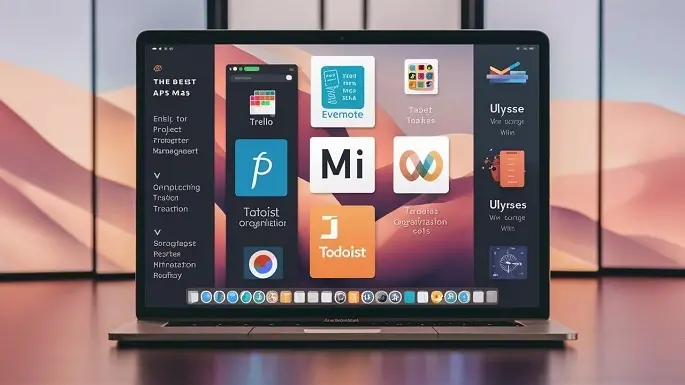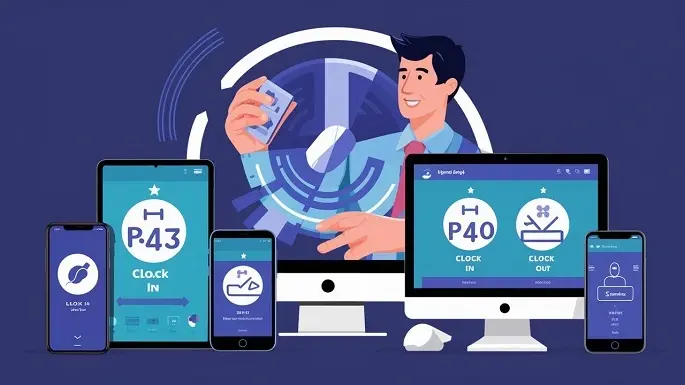In today's fast-paced workplaces, maximizing productivity and efficiency is essential for success. One powerful tool that can help achieve this is time tracking for employees. With accurate time-tracking data, managers can pinpoint areas where resources can be better allocated, leading to improved efficiency and productivity. In this article, we will explore the benefits of using employee time tracking and how it can help businesses drive efficient and effective projects. So, hop on board the productivity train and discover the power of time tracking!
The Benefits of Time Tracking for Employees
Improved Time Management: Improved time management is crucial for any organization to thrive. One effective software that can greatly enhance time management is time tracking for employees. By implementing a time tracking system, businesses can ensure that their employees are utilizing their time effectively, leading to increased productivity and efficiency. Time tracking provides accurate data on the amount of time spent on various tasks, allowing managers to identify and eliminate time-wasting activities. This system helps in setting realistic deadlines and better resource allocation. Moreover, time tracking promotes accountability and transparency within the team, as employees are aware that their work hours are being monitored. As a result, employees are encouraged to prioritize tasks, stay focused, and handle their responsibilities more efficiently. Overall, the implementation of time tracking for employees can have a significant positive impact on an organization's ability to manage time efficiently and achieve its goals.
Enhanced Accountability: implementing a time-tracking system can greatly enhance accountability within an organization. By accurately reporting time, improving project management, identifying time wasters, facilitating prioritization, and aiding performance evaluations, organizations can foster a culture of accountability and ensure that employees are utilizing their time effectively to meet organizational goals and objectives.
Identifying Productivity Patterns: Identifying productivity patterns with time tracking for employees is an effective way for companies to analyze and optimize their workforce efficiency. By implementing time-tracking software and techniques, employers can gain valuable insights into how employees are allocating their time and efforts throughout the workday. This information can help identify productivity patterns and trends, allowing management to make informed decisions and take necessary steps to improve overall productivity levels. Whether it's identifying peak performance hours, recognizing time-wasting activities, or identifying areas for process improvement, time tracking can provide a clear picture of employee productivity and enable organizations to foster a more productive work environment.
Employee Engagement and Morale: Employee engagement and morale play a crucial role in the success of any organization. When employees feel motivated, valued, and connected to their work, they are more likely to be productive, innovative, and committed to the company's goals. One effective tool for enhancing employee engagement is time tracking.
Time tracking allows employees to have a clear understanding of their work patterns, priorities, and the time they invest in specific tasks. With accurate data at their disposal, employees can better manage their time, set realistic goals, and prioritize their workload. This helps in reducing stress levels and increasing productivity, as employees are able to work more efficiently and effectively.
Furthermore, time tracking can also contribute to improving employee morale. It provides transparency and accountability in terms of work hours and project progress, fostering a sense of trust and fairness within the organization. Employees feel empowered as they have a record of their own productivity, which can be used as evidence of their accomplishments and contributions.
Top ways to communicate time-tracking data effectively
Effective communication of time-tracking data is crucial for efficient project management and successful execution of tasks. Here are some top ways to communicate time-tracking data effectively:
1. Clear and concise reports: Present time tracking data in a visually appealing format that is easy to understand. Utilize tables, charts, and graphs to highlight key information, such as hours worked, project progress, and any deviations from the planned timeline.
2. Regular status updates: Schedule regular meetings or send timely status reports to keep all stakeholders informed about the progress of time-sensitive tasks. This helps to establish a transparent and accountable work environment.
3. Use project management software: Invest in reliable project management software that allows for real-time tracking and reporting of time-related data. These tools enable the team to enter their hours worked, track project milestones, set deadlines, and generate automated reports.
4. Contextualize data within project goals: Present time tracking data in a way that relates to the project's objectives and goals. This helps stakeholders understand the impact of their efforts on the overall project timeline and motivates them to meet deadlines.
5. Open communication channels: Maintain open lines of communication between team members, project managers, and clients to address any issues or delays promptly. Encourage team members to share their progress and challenges, fostering a collaborative work environment.
6. Provide actionable insights: Instead of just presenting raw time-tracking data, offer meaningful insights and analysis. Identify patterns, inefficiencies, and potential areas for improvement to optimize productivity and enhance future time management.
7. Set realistic expectations: Communicate time-tracking data that aligns with realistic expectations. If delays or setbacks occur, communicate them promptly and provide explanations, ensuring everyone understands the impact on the project timeline and can adjust accordingly.
8. Demonstrate the value of time tracking: Educate stakeholders on the benefits of accurate time tracking, emphasizing how it contributes to better resource allocation, accurate project planning, and effective decision-making.
Conclusion
In conclusion, the implementation of time-tracking systems can significantly boost productivity and efficiency in the workplace. By accurately tracking and analyzing the time spent on tasks, employees and organizations can identify and eliminate time-wasting activities, optimize work processes, and make informed decisions to enhance overall performance.
Time tracking allows employees to gain a clearer understanding of how they spend their time during the workday. This knowledge helps them prioritize tasks, manage their workload more effectively, and eliminate distractions that can hinder productivity. By identifying and addressing inefficiencies, employees can optimize their work habits, leading to increased output and better time management.
Contact us here for Tracking your employees now!


